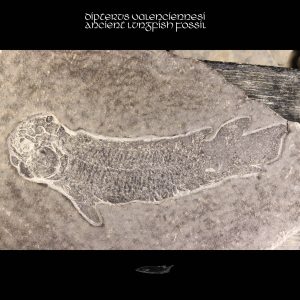Highlander Fossils
Offering a unique piece of Scotland
Dipnoi
About the Dipnoi
Evolutionary Significance
The earliest known Dipnoi date back from about 400 million years ago. During the Devonian the Dipnoi had dorsal, anal, and caudal fins. At the end of the Devonian these fins disappeared or merged to form one a single elongated caudal fin. This is a characteristic which all living lungfishes still have. It is believed that since the end of the Carboniferous lungfishes only inhabited freshwater. Later during the Permian they evolved the ability to aestivate, which means they can lie in a state of dormancy enclosed in the mud to survive long periods when a river or lake dries up, becoming active again when the rains arrive.
Dipterus are a strange fossil in the sense it can be found in two ways. Splitting open a random slab or you can find a buldge on a slab which then needs to be prepared. Both can give you an intact specimen but the ones that need preparation tend to be a bit more stunning but you will only have one example and not a positive and negative half of the lungfish.
Showing all 5 results
-

Dipterus valenciennesi Ancient Lungfish Fossil (prepped)
€ 100,00 Add to basket -

Dipterus valenciennesi Ancient Lungfish Fossil (prepped) with video
€ 499,00 Add to basket -

Dipterus valenciennesi Ancient Lungfish Fossil
€ 299,99 Add to basket -

Dipterus valenciennesi Ancient Lungfish Fossil
€ 999,99 Add to basket -

Dipterus valenciennesi Ancient Lungfish Fossil
€ 150,00 Add to basket





